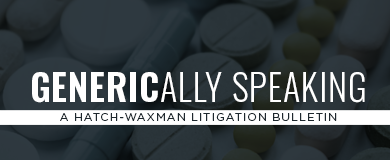- Acumen Powered by Robins Kaplan LLP®
- Affirmative Recovery
- American Indian Law and Policy
- Antitrust and Trade Regulation
- Appellate Advocacy and Guidance
- Business Litigation
- Civil Rights and Police Misconduct
- Class Action Litigation
- Commercial/Project Finance and Real Estate
- Corporate Governance and Special Situations
- Corporate Restructuring and Bankruptcy
- Domestic and International Arbitration
- Entertainment and Media Litigation
- Health Care Litigation
- Insurance and Catastrophic Loss
- Intellectual Property and Technology Litigation
- Mass Tort Attorneys
- Medical Malpractice Attorneys
- Personal Injury Attorneys
- Telecommunications Litigation and Arbitration
- Wealth Planning, Administration, and Fiduciary Disputes
Acumen Powered by Robins Kaplan LLP®
Ediscovery, Applied Science and Economics, and Litigation Support Solutions
-
April 29, 2024Robins Kaplan Mourns Death of New York Associate Waleed Abbasi
-
April 29, 2024Robins Kaplan Secures $7.75 Million Verdict in Aerosol Dust Remover Abuse Case
-
April 23, 2024David Martinez Recognized Among Top 100 Lawyers in Los Angeles by LA Business Journal
-
May 20, 2024The Present and Future of DEI
-
May 23, 202414th Annual Disability Justice Seminar
-
June 10-11, 20242024 Probate and Trust Law Section Conference
-
April 30, 2024A World Without Non-Competes: Protecting Confidential Information and Trade Secrets Following the FTC's Ban
-
First QuarterGENERICally Speaking: A Hatch-Waxman Litigation Bulletin
-
March 2024e-Commerce: Pitfalls and Protections
-
September 16, 2022Uber Company Systems Compromised by Widespread Cyber Hack
-
September 15, 2022US Averts Rail Workers Strike With Last-Minute Tentative Deal
-
September 14, 2022Hotter-Than-Expected August Inflation Prompts Massive Wall Street Selloff
Find additional firm contact information for press inquiries.
Find resources to help navigate legal and business complexities.
In re Sugammadex
Bridion® (sugammadex sodium)
May 13, 2023

Case Name: In re Sugammadex, No. 20-CV-2576 (CCC/LDW), 2023 WL 3966146 (D.N.J. June 13, 2023) (Cecchi, J.)
Drug Product and Patent(s)-in-Suit: Bridion® (sugammadex sodium); U.S. Patent No. RE44,733 (“the ’733 patent”)
Nature of the Case and Issue(s) Presented: In Merck’s consolidated action against various ANDA filers, the court took up one issue: whether a patent term extension (PTE) was invalid. The ANDA filers challenged the reissue patent’s five-year PTE (a consequence of FDA’s nearly 12-year regulatory review of Bridion). Specifically, Defendants contended that calculation of a PTE for a reissue patent must be based on the date that the reissue patent issued, pursuant to § 156(c) of the Patent Act. Defendants argued that reading § 156(c) in this way entitles Merck to only 686 days PTE, rather than the five years that the PTO granted. Defendants’ validity challenge, if meritorious, would render the portion of the patent after December 14, 2022, invalid under 35 U.S.C. § 282(c). In response, Merck argued that “the date the patent is issued,” read in the proper context, refers to the date that the original patent issued.
Thus, “the crux of the legal dispute concerns whether the Patent Act requires a patent term extension of a reissued patent to be calculated based on the issue date of the original patent—the term of which is inherited by the reissue patent—or, conversely, based on the issue date of the reissued patent.” After a one-day bench trial, the court found that the PTE was not invalid under § 282(c).
Why Merck Prevailed: The facts of the case were almost entirely undisputed. Merck’s original patent covering sugammadex issued on December 20, 2003. But Merck could not market its product until December 15, 2015, nearly 12 years later. Because the Hatch-Waxman Act allows for restoration of patent term lost to lengthy FDA regulatory review, Merck sought a PTE (maximum five years). And the PTO granted it.
The issue here arises from the reissue patent. When Merck applied for a PTE in 2016, the original patent had been surrendered and the reissue patent put in its place. 35 U.S.C. § 156(c) requires calculation of PTE based on the “regulatory review period for the approved product” that “occurs after the date the patent is issued.” Understanding “the date the patent is issued” in § 156(c) to refer to the term of the original patent, Merck calculated that it was entitled to the maximum allowable five-year PTE. The PTO agreed. But the ANDA filers contended that the PTO should have used the date that the reissue patent issued—which reduces the PTE to less than two years.
The court ultimately determined that, when read in the proper context alongside statutes addressing reissue, the issue date of the original patent is used for calculating PTE. Defendants’ proposal creates an untenable reading of the statutory scheme on the whole and conflicts with other provisions of the Patent Act. Moreover, Defendants’ interpretation would undermine the purpose of the Hatch-Waxman Act, in contrast to Merck's interpretation, which aligns with it. Using the original issue date also comports with the PTO’s policy and longstanding practice of treating reissued patents as if they were originally granted in amended form for purposes relevant to the PTO’s administration of the Patent Act.
Related Publications
Related News
If you are interested in having us represent you, you should call us so we can determine whether the matter is one for which we are willing or able to accept professional responsibility. We will not make this determination by e-mail communication. The telephone numbers and addresses for our offices are listed on this page. We reserve the right to decline any representation. We may be required to decline representation if it would create a conflict of interest with our other clients.
By accepting these terms, you are confirming that you have read and understood this important notice.
